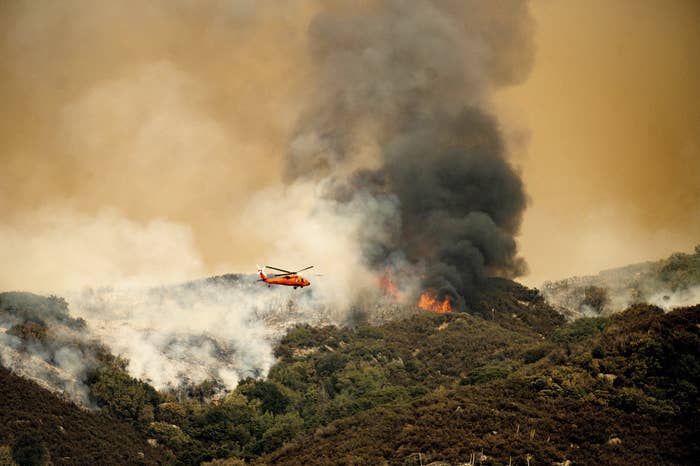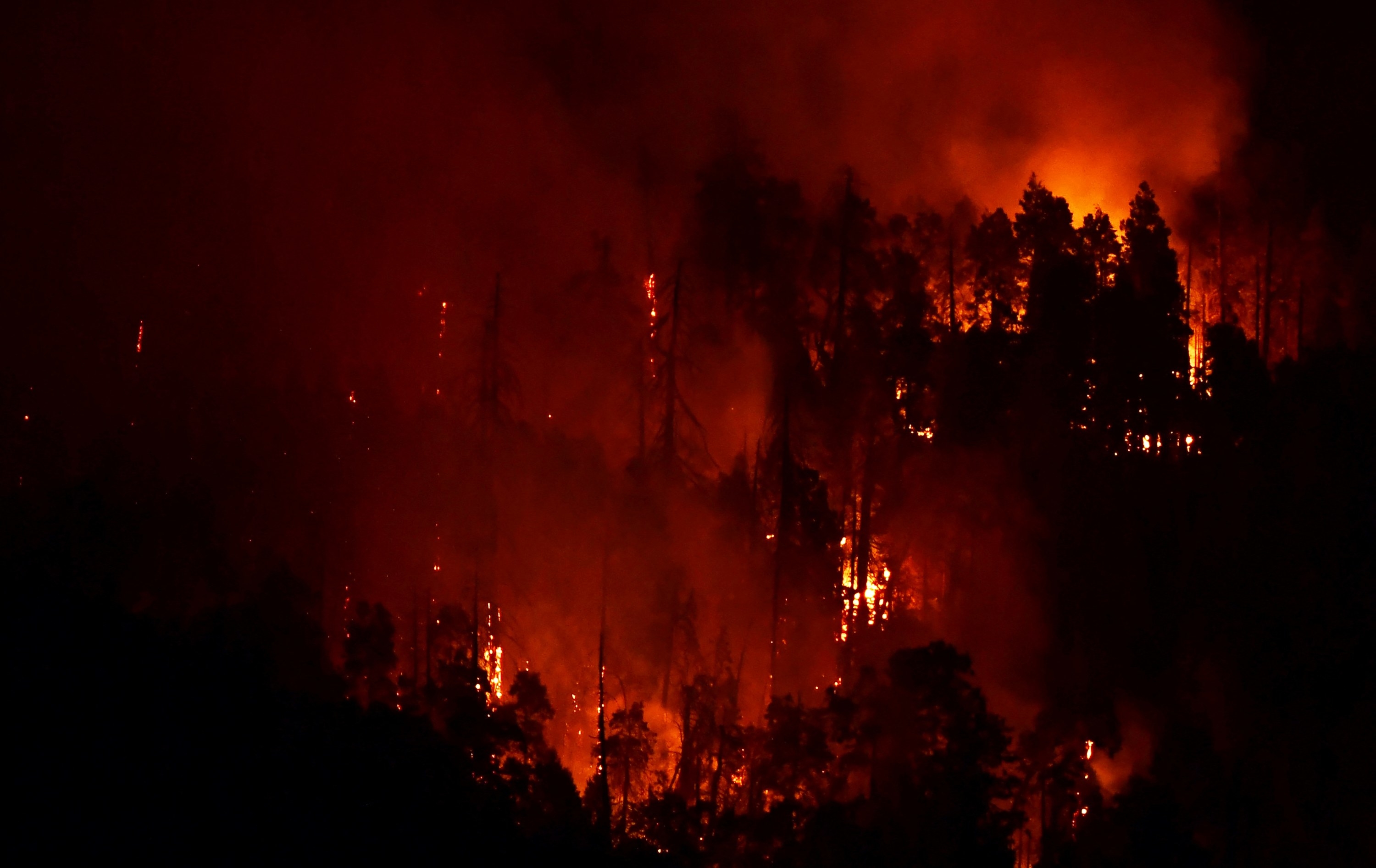Raging wildfires burning in California forests have reached sequoia trees, raising fears the beloved conifers, some of which are up to 1,5...
Raging wildfires burning in California forests have reached sequoia trees, raising fears the beloved conifers, some of which are up to 1,500 years old, could be devastated once more by flames.
Flames from the Windy fire reached at least four groves of the giant sequoias. The extent of the damage to Long Meadow Grove, Peyrone Grove, and South Peyrone Grove in Sequoia National Forest was still unclear, an official with the US Forest Service told BuzzFeed News on Friday. About half of the Oriole Lake Grove in Sequoia National Park was also within the fire's footprint, deep within a wilderness area where firefighters couldn't safely work.
The sequoia groves in the region are home to the largest trees in the world, some of which have been growing for more than 3,000 years, but they are being devastated by drought and recent wildfires.
Long Meadow Grove is home to the Trail of 100 Giants; at least 125 giant sequoias with a diameter of at least 10 feet live there.
The Windy fire has so far burned more than 6,800 acres in the forest. Officials were also keeping their sights on the KNP Complex fire, which has burned more than 11,300 acres and threatens the Giant Forest, home to the world's largest tree, General Sherman.
Forest officials said they were set to protect the historical trees at the Giant Forest by digging fire lines, using sprinklers, and clearing brush around what is the only home for the world's largest trees.
Park officials on Thursday tried to take additional steps to protect the behemoth trees, wrapping some of the oldest and largest of the trees in foil at their base to protect them from the coming flames.
However, fire officials were concerned the protections they were taking might not be enough to stop the steady pace of the blaze, which has covered more than 11,300 acres in the Sequoia and Kings Canyon national parks as of Friday afternoon.
Among the giant trees being wrapped as a last-ditch effort to save them was General Sherman, the largest tree in the world, which stands at 275 feet and has a diameter of more than 36 feet at its base.

On Friday, however, officials reported minimal fire growth, and flames had yet to penetrate the home of the giant trees. Fire officials added that they hoped water drops and crews assigned to dig fire lines might keep flames from entering the forest.
Jon Wallace, operations section chief for the KNP Complex fire, said the primary objective of fire crews was to protect the communities and infrastructure in the towns of Three Rivers and North Fork, which remained threatened by the fire.
The secondary objective for crews was to protect the historical trees at the Giant Forest and to work to hopefully keep flames from damaging the sequoias.
Prescribed fires have helped reduce the threat of blazes in there, he said, but persistently dry weather had raised the possibility of dry brush and plants that could fuel the approaching fire.
"The fuels, if you will, are in really good shape, but there's a lot of concern that with drought this year that this drought has decreased the resilience of those trees," he said.
Five crews have been working near the Giant Forest, digging fire lines and vegetation in hopes of keeping flames away. If they can't keep the fire out, Wallace said, crews would begin to conduct burnouts in the Giant Forest to cut off the fire's path.
Fire officials expect the fire to continue to travel upslope on its northeast end and climb toward the Giant Forest within the next 48 hours.
Both the Windy and KNP Complex fires were sparked by lightning strikes, but weather disasters are inextricably linked to human-induced climate change. The planet has warmed 2.1 degrees since 1880, according to NASA, which is making disasters worse. This includes prolonged wildfire seasons and heat waves that are getting hotter, more frequent, and longer-lasting. The cost of climate disasters is soaring. Stopping this vicious cycle will require drastically reducing our reliance on climate-polluting fossil fuels.

Last year, between 10% and 14% of all the historical trees were killed in the Castle fire, which burned more than 174,000 acres of Sequoia National Forest and Kings Canyon National Park. The Castle fire was sparked by lightning strikes in August 2020.
Left behind in the charred devastation of the Castle fire, about 7,500 to 10,600 of the trees were killed in their only natural habitat in the Sierra Nevada, according to a report from the National Park Service.
The true damage caused by the fire will likely still take years to assess, according to the report; the Castle fire and the region's future fires pose an unprecedented threat to the majestic sequoias, some of which have a trunk diameter of at least 4 feet.